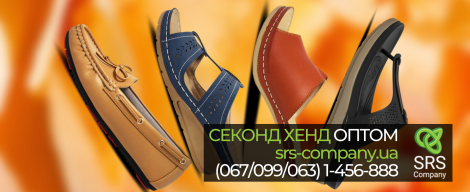 />
/>
Translated from English, second hand literally means "second hand", that is, a thing of reuse. For the first time this concept appeared in England, when kings and noble persons, as a sign of gratitude or special favor, presented their clothes "from the royal shoulder" to their entourage.
In the modern sense, "second hand" appeared more than a hundred years ago. Initially, it was a charitable help to the poor and homeless citizens. Social services announced the collection of things, and wealthier citizens took out their unnecessary clothes, accessories and much more. Thus, it was possible to fulfill a merciful mission and get rid of a heap of unnecessary things in the house. And smart entrepreneurs started buying used clothes from people and then selling them. So he became a business, and over time, very profitable.
Today, in Europe, there are several of the largest companies that have put the second hand business on a professional basis. They open special collection points for used clothes, then things are sent for sorting and disinfection - the most important stage of work. More than 10 million Europeans are employed in this field. This is a whole industry and many people, even from fairly wealthy strata of society, shop in second-hand stores, because they simply do not see the point of paying more. This is especially true of children's clothing, because babies grow up very quickly and some things are put on only once, thus, in second-hand stores, children's clothing is sold in excellent condition. Also, in European countries, second-hand stores sell not only clothes, but also household and household goods, the so-called commissions. These shops are so popular that they can be found even on the central streets of European capitals and there are always a lot of customers in them.
The second-hand phenomenon in Ukraine appeared only in the 90s of the last century and not in its best manifestation. The so-called shops were just tents with huge folding beds, on which were simply thrown mountains of rumpled clothes and people of a very impartial appearance rummaging through them. Today, second-hand shops are already civilized establishments, where sellers carefully hang all things by size and age, select the most beautiful, select marriage. Having entered such a store, you can buy quality branded clothing for a penny. Second-hand children's clothing in general is very often presented completely new, with tags and in excellent condition. Jacket, skirt, jeans, dress - a child can be dressed from head to toe in beautiful, high-quality clothes from famous world brands.
In Ukraine and abroad, a modern second-hand is no longer humanitarian aid to the poor, but a product that is bought and sold, like everything else. Sellers must have quality certificates for the goods and certificates of disinfection. These are inexpensive clothes that everyone can afford and still look their best.
Many, for sure, are interested in the question - where do new things come from in second hand? Everything is quite simple, the rich residents of European countries simply wear clothes for a maximum of one season and buy them practically without looking, what does not fit, they boldly donate not back to the store, but to the collection point for used clothes along with other things that they wore once and did not like it, did not fit, etc. So second-hand children's clothing most often comes across completely new. And you should not assume that by giving away their expensive things, Europeans are doing charity, in part this, of course, is the case, but for this they receive money, various certificates, discount cards, so the product initially has its own price.
In the West, second-hand trade is industrialized and occupies its own market segment. More than 10 million people are employed in this industry in Europe. The first factory for the processing of "used" clothes was opened in England over 100 years ago.
Today the largest second-hand suppliers are Germany, Holland, Great Britain and Switzerland. It is interesting that in small Oslo (the capital of Norway), whose population is only 500 thousand people, and the income level is one of the highest in the world (unemployment benefit is about 2 thousand dollars), stores selling second-hand clothes are 3 times more than in other multi-million dollar cities.



